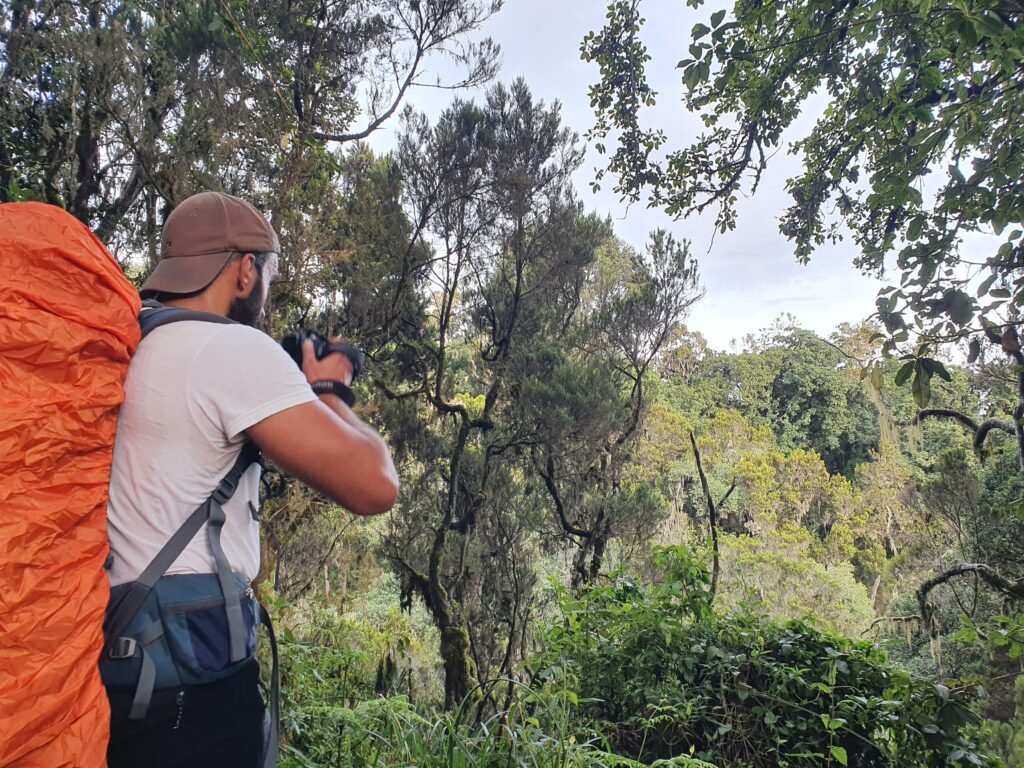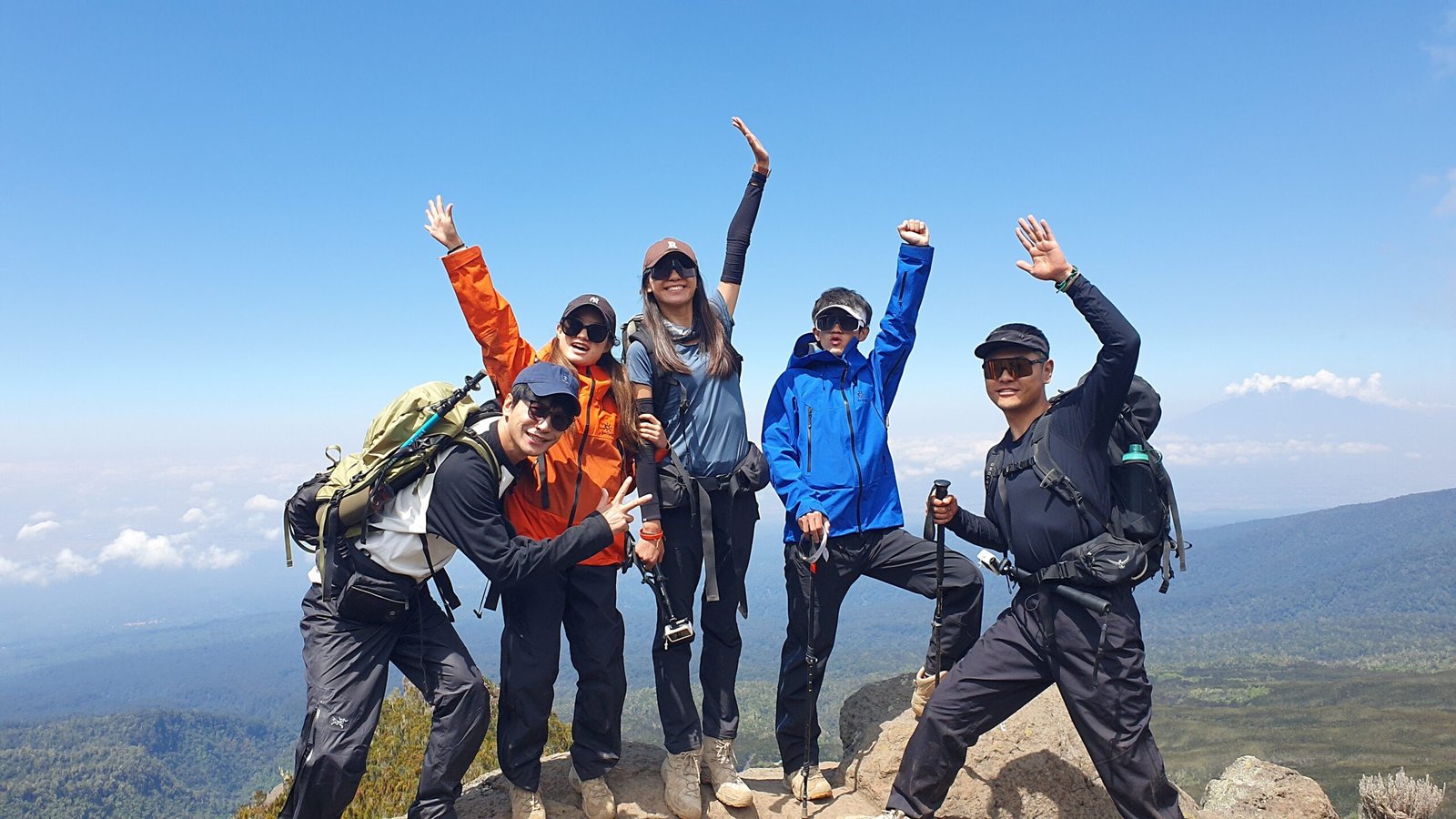The best Kilimanjaro’s Climbing Lemosho in Seven-Days Full Package 2025&2026
The best Kilimanjaro’s Climbing Lemosho in Seven-Days Full Package 2025&2026 is one of the most beautiful and rewarding ways to experience this iconic climb. And Mount Kilimanjaro is the highest mountain in Africa, Known for its stunning scenery, varied ecosystems, and excellent acclimatization opportunities, the seven-day Lemosho Route offers an ideal balance of challenge and enjoyment. This guide will cover everything you need to know about the 7-day full package for the Lemosho Route in 2025 and 2026, from the itinerary and preparation tips to costs and travel logistics.

Overview of Mount Kilimanjaro
Mount Kilimanjaro stands at 5,895 meters (19,341 feet) and is one of the Seven Summits, attracting climbers from around the globe. The climb to the summit is unique in that it does not require technical climbing skills, making it accessible to trekkers of various experience levels. Despite this, Kilimanjaro poses challenges due to its altitude, requiring careful planning and acclimatization.
Why Choose the The best Kilimanjaro’s Climbing Lemosho in Seven-Days Full Package 2025&2026 ?
The Lemosho Route is regarded as one of the most scenic routes up Kilimanjaro, offering stunning views of the mountain’s diverse landscapes, from lush rainforests to alpine meadows and stark, volcanic terrain. It is often called the “Luxury Route” due to its beauty and the relatively low traffic compared to other routes. The seven-day version of the Lemosho Route provides ample time for acclimatization, reducing the risk of altitude sickness and increasing summit success rates.
Seven Days on Lemosho vs. Other Routes
Unlike the shorter six-day routes like Marangu or Machame, the seven-day Lemosho Route allows for a slower, more comfortable ascent. This extra time at altitude gives trekkers more opportunities to acclimatize, leading to higher success rates. Lemosho is also less crowded, making it a more peaceful and private trekking experience.
The The best Kilimanjaro’s Climbing Lemosho in Seven-Days Full Package 2025&2026 Overview
Route Highlights: Scenic Beauty and Wildlife
The Lemosho Route is famous for its diverse and dramatic landscapes. Trekkers will pass through lush rainforests filled with wildlife like colobus monkeys, traverse the expansive Shira Plateau, and navigate the striking Barranco Wall. Views of Kibo Peak and Mount Meru are particularly spectacular on clear days.
Terrain and Difficulty Level
The terrain on the Lemosho Route is varied, ranging from dense forests to rocky trails and volcanic scree. Although it is non-technical, the route requires physical fitness due to the long hiking days and significant altitude gains. The difficulty is moderate, but the seven-day itinerary makes the route more manageable for climbers with varying fitness levels.
Altitude Profile and Key Points of Interest
The Lemosho Route provides an excellent altitude profile, adhering to the “climb high, sleep low” principle, which aids acclimatization. Key points of interest include the Shira Plateau (3,500 meters), Lava Tower (4,630 meters), and the Barranco Wall (4,200 meters). Each of these locations offers stunning views and unique challenges that make the trek an unforgettable experience.
The best Kilimanjaro’s Climbing Lemosho in Seven-Days Full Package 2025&2026 Overview Itinerary
Day 1: Arrival in Moshi and Briefing
Arrive at Kilimanjaro International Airport, where you’ll be greeted and transferred to your hotel in Moshi. This day is spent resting, checking equipment, and receiving a detailed briefing from your guide about the trek ahead.
Day 2: Lemosho Gate to Big Tree Camp
Your journey begins with a drive to Lemosho Gate (2,100 meters), where the trek officially starts. You’ll hike through the dense rainforest, home to a variety of wildlife, for about 3-4 hours before reaching Big Tree Camp (2,800 meters), your first campsite.
Day 3: Big Tree Camp to Shira Camp 1
Leaving the rainforest behind, you’ll ascend into the moorland zone, where the landscape opens up and the temperatures start to drop. After a 5-6 hour trek, you’ll reach Shira Camp 1 (3,500 meters), located on the western edge of the Shira Plateau.
Day 4: Shira 1 to Shira 2 Camp
This is a relatively easy day, with a gradual hike across the beautiful Shira Plateau. You’ll arrive at Shira 2 Camp (3,850 meters) after 4-5 hours, enjoying panoramic views of Kibo Peak and Mount Meru along the way. The pace is slow, allowing your body to acclimatize.
Day 5: Shira 2 to Barranco Camp via Lava Tower
This is one of the most important acclimatization days. You’ll trek to Lava Tower (4,630 meters) for a challenging ascent, before descending to Barranco Camp (3,960 meters) to sleep. This “climb high, sleep low” technique helps prepare your body for higher altitudes.
Day 6: Barranco Camp to Barafu Camp
The day begins with a thrilling climb up the Barranco Wall, a steep but non-technical scramble. You’ll then cross several valleys before reaching Barafu Camp (4,673 meters), the base camp for your summit attempt. After an early dinner, you’ll rest before the final push to the summit.
Day 7 of the The best Kilimanjaro’s Climbing Lemosho in Seven-Days Full Package 2025&2026 Overview : Barafu to Uhuru Peak and Descent to Mweka Camp
The summit push begins just after midnight, with a steep climb to Stella Point (5,739 meters), where the sun rises over the crater rim. From here, it’s a short trek to Uhuru Peak (5,895 meters), the highest point in Africa. After celebrating your success, you’ll descend back to Mweka Camp (3,100 meters) for your final night on the mountain.
Best Time to Climb Lemosho Route in 2025 & 2026
High Season vs. Low Season: Climate Insights
The best time to climb Kilimanjaro is during the dry seasons, which run from January to mid-March and from June to October. During these months, the weather is more predictable, with clear skies and dry trails. The high season can see more crowds, but the Lemosho Route remains less crowded than others.
Ideal Months to Climb for 2025 & 2026
For the best weather and trekking conditions in 2025 and 2026, plan your climb in:
January to early March: Clear skies, cooler temperatures, some snow near the summit.
June to October: Warmer conditions, with excellent summit views.
Dry Season vs. Wet Season on Lemosho
While the dry season offers the most favorable trekking conditions, the wet season (April-May and November) can still be a good time for those seeking fewer crowds. However, be prepared for muddy trails and less visibility due to cloud cover.
FAQs About the best Kilimanjaro’s Climbing Lemosho in Seven-Days Full Package 2025&2026
Is Lemosho a difficult route for beginners? The Lemosho Route is moderately difficult and offers an excellent acclimatization profile, making it suitable for beginners with good fitness levels. However, proper preparation and mental readiness are crucial for success.
What equipment is provided by tour operators? Most tour operators provide tents, sleeping mats, cooking equipment, and meals. Climbers should bring their own sleeping bags, hiking gear, and personal items.
How does the seven-day itinerary aid acclimatization? The seven-day itinerary includes multiple days of gradual ascent and the “climb high, sleep low” principle, allowing your body to adjust to the altitude more effectively, which reduces the risk of altitude sickness.
Can the Lemosho Route be completed in less than seven days? Yes, some climbers opt for an eight-day itinerary for even better acclimatization, while it’s possible to complete the Lemosho Route in six days. However, reducing the number of days increases the risk of altitude sickness.
How do you deal with altitude sickness on Lemosho? Stay hydrated, ascend slowly, and follow the itinerary’s acclimatization guidelines. Many climbers take medications like Diamox to help prevent altitude sickness. If symptoms worsen, descending is the best option.
How much should I tip my guides and porters? Tipping is customary on Kilimanjaro. The standard recommendation is between $200 and $300 per person, distributed among guides, porters, and cooks.
Inclusions
Quality, waterproof, four-season mountain sleeping tents (on twin sharing basis)
Emergency Oxygen Cylinder
Quality Mess tents Day 1
Conservation fees (part of park fees)
All transfers to the mountain and back to your Moshi hotel
Camping or Hut fees (part of park fees)
Clean, purified drinking water
Guides, Porters, Cook salaries and park fees
Sleeping Mattress
All meals while on the Mountain
Rescue fees (part of park fees)
Large portions of fresh, healthy, nutritious food
Kilimanjaro summit certificate
VAT (18% charged by the Government)
Professional, experienced, mountain guides
Exclusions
Transfers (available as an optional addon)
Personal Expenses (e.g. laundry, telephone, beverages, etc.)
Surcharge for online payment of advance and balance (5% on each payment)
Tanzania Visa
Liquors, beers and bottled beverages

